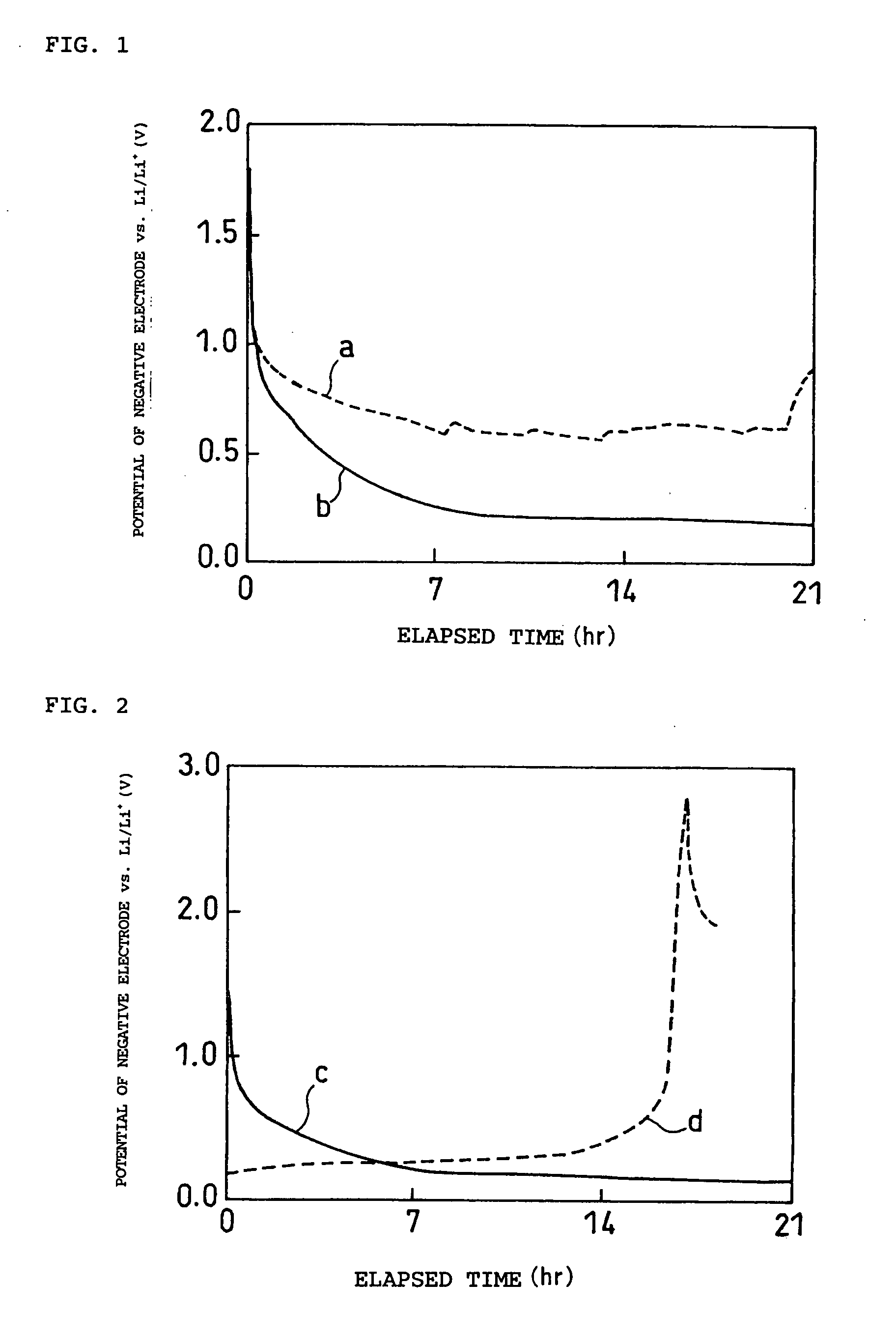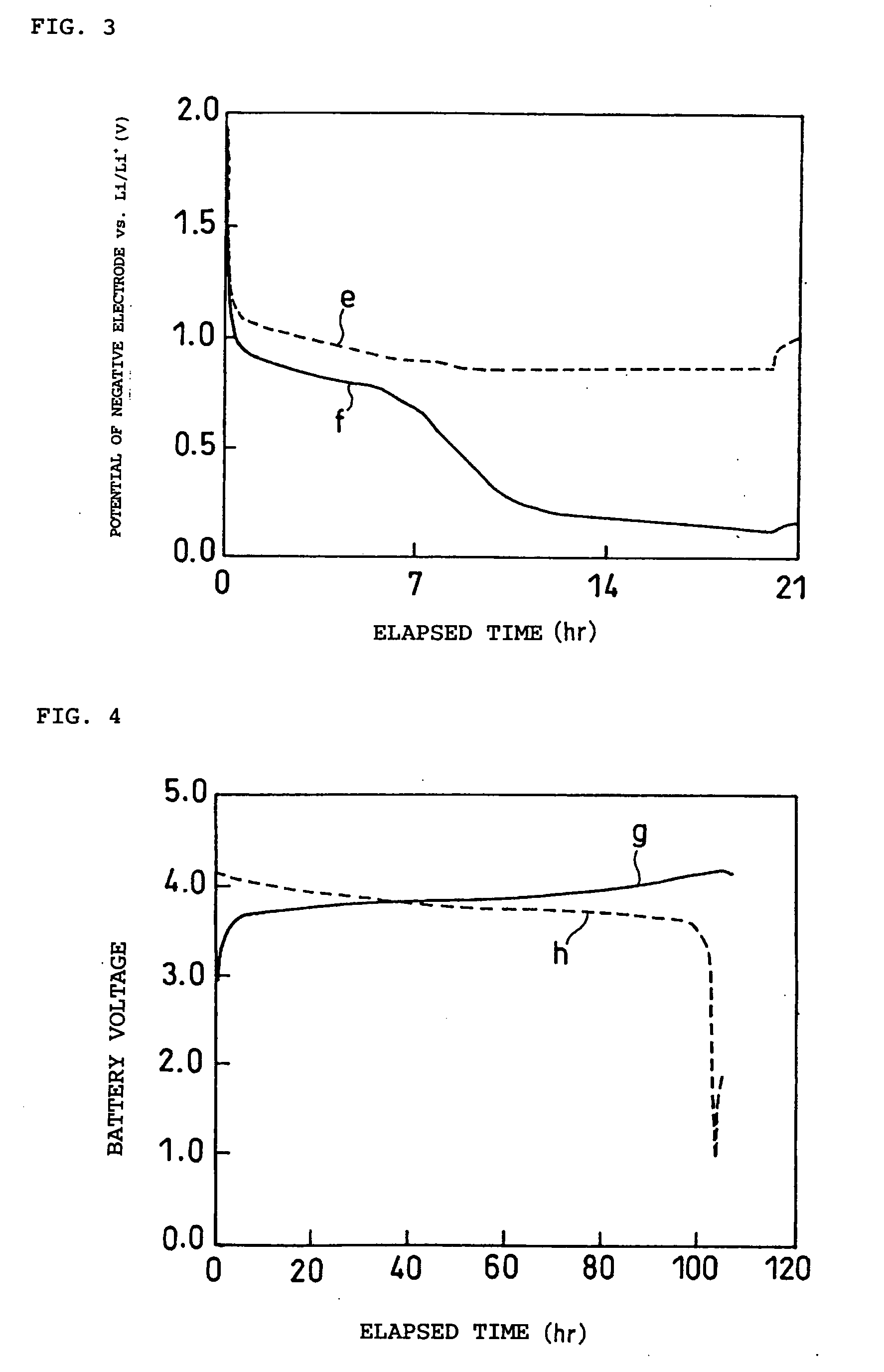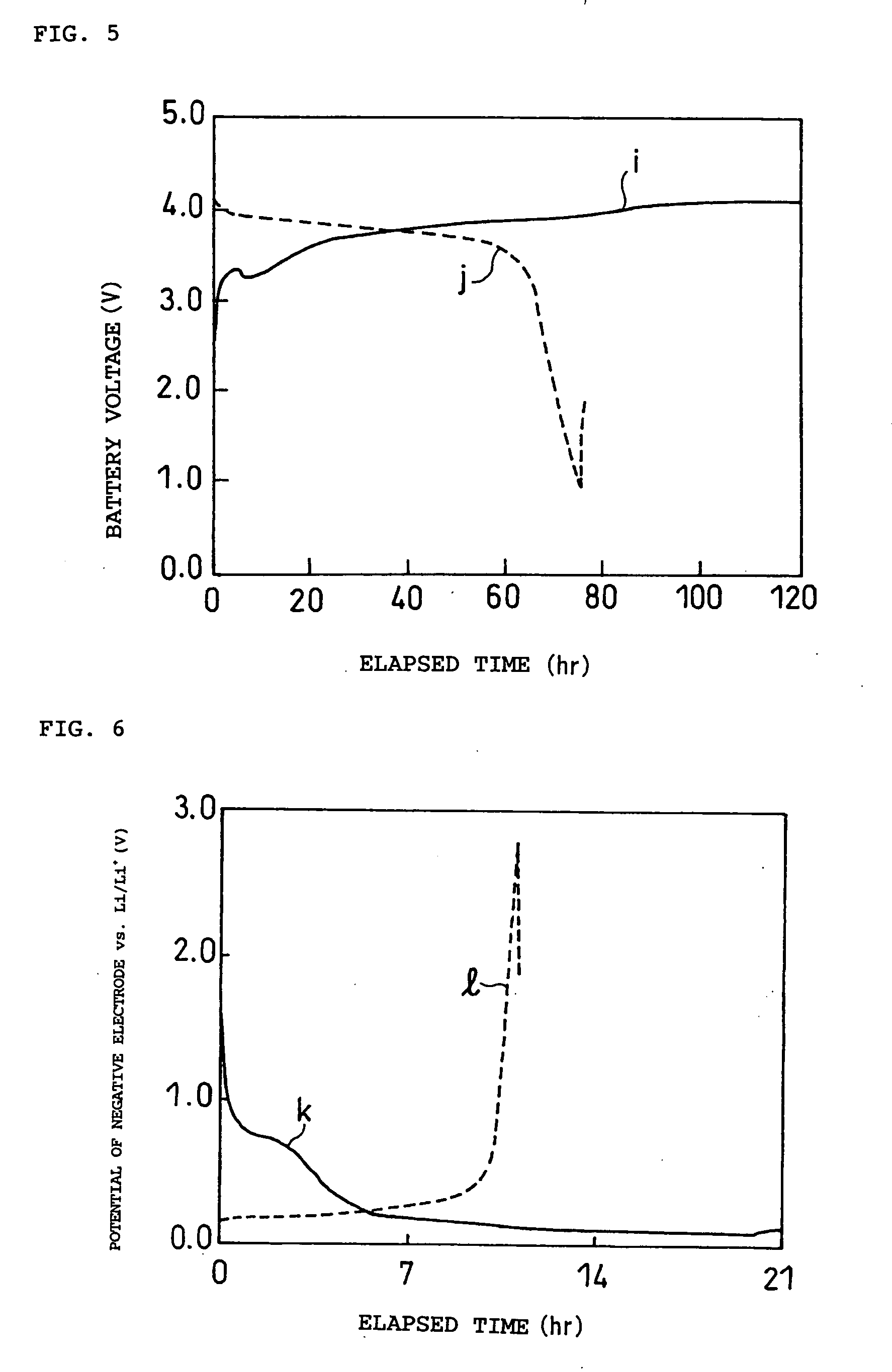Non-aqueous electrolyte and electrochemical energy storage device using the same
- Summary
- Abstract
- Description
- Claims
- Application Information
AI Technical Summary
Benefits of technology
Problems solved by technology
Method used
Image
Examples
example 1
[0066]EC, LiBF4 and TEA.BF4 were mixed in a molar ratio of EC / LiBF4 / TEA.BF4=6 / 1 / 1. As a result, there could be prepared an electrolyte having a total salt concentration of 2.4 mol / kg and having a single phase at ordinary temperatures. The visual observation confirmed that the undissolved salt did not float and the electrolyte was transparent without having muddiness and was a single phase.
[0067]When EC and TEA.BF4 were mixed in a molar ratio of EC / TEA.BF4=6 / 1, TEA.BF4 did not completely dissolve and floated on the upper surface of the solution in an insoluble state. Herein, if TEA.BF4 is assumed to be completely dissolved, an electrolyte having a salt concentration of 1.3 mol / kg can be obtained. It was found that TEA.BF4 was easily dissolved by the existence of LiBF4 and had a salt concentration of at least 1.8 times in the electrolyte.
example 2
[0068]γ-BL, LiBF4 and TEA.BF4 were mixed in a molar ratio of γ-BL / LiBF4 / TEA.BF4=4 / 1 / 1 and held at 60° C. As a result, there could be prepared an electrolyte having a total salt concentration of 3.1 mol / kg and having a single phase. When γ-BL and TEA.BF4 were mixed in a molar ratio of γ-BL / TEA.BF4=4 / 1, TEA-BF4 salt did not completely dissolve and floated on the upper surface of the solution in an insoluble state at 60° C. Herein, if TEA.BF4 is assumed to be completely dissolved, an electrolyte having a concentration of 1.8 mol / kg is obtained. It was found that TEA.BF4 was easily dissolved by the existence of LiBF4 and had a salt concentration of at least 1.7 times in the electrolyte.
example 3
[0069]EC, LiBF4 and TEMA.BF4 were mixed at various rates shown in Table 1. The states of the prepared electrolytes are shown in Table 1. Compositions 1-1, 1-2, 1-8 and 1-9 are Comparative Examples.
TABLE 1CompositionCompositionEC / LiBF4 / TEMA · BF4number(molar ratio)Mixed state1-12 / 1 / 0.2LiBF4 is precipitated1-22 / 1 / 0.4LiBF4 is precipitated1-32 / 1 / 0.6Single phase1-42 / 1 / 0.8Single phase1-52 / 1 / 1Single phase1-62 / 0.8 / 1Single phase1-72 / 0.6 / 1Single phase1-82 / 0.4 / 1TEMA · BF4 floats1-92 / 0.2 / 1TEMA · BF4 floats
[0070]In the mixed conditions of the compositions 1-3 to 1-7, the electrolytes of high ion concentrations in a single phase at ordinary temperatures could be prepared. Herein, in the electrolyte having a molar ratio of EC / LiBF4 / TEMA.BF4=2 / 1 / 1, the total salt concentration was 4.2 mol / kg. On the other hand, in the compositions 1-1, 1-2, 1-8 and 1-9, the electrolytes of a single phase could not be prepared at ordinary temperatures. When EC and LiBF4 were mixed in a molar ratio of EC / LiBF4=2 / 1 an...
PUM
 Login to View More
Login to View More Abstract
Description
Claims
Application Information
 Login to View More
Login to View More - R&D
- Intellectual Property
- Life Sciences
- Materials
- Tech Scout
- Unparalleled Data Quality
- Higher Quality Content
- 60% Fewer Hallucinations
Browse by: Latest US Patents, China's latest patents, Technical Efficacy Thesaurus, Application Domain, Technology Topic, Popular Technical Reports.
© 2025 PatSnap. All rights reserved.Legal|Privacy policy|Modern Slavery Act Transparency Statement|Sitemap|About US| Contact US: help@patsnap.com



